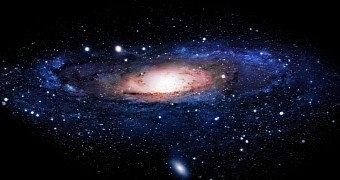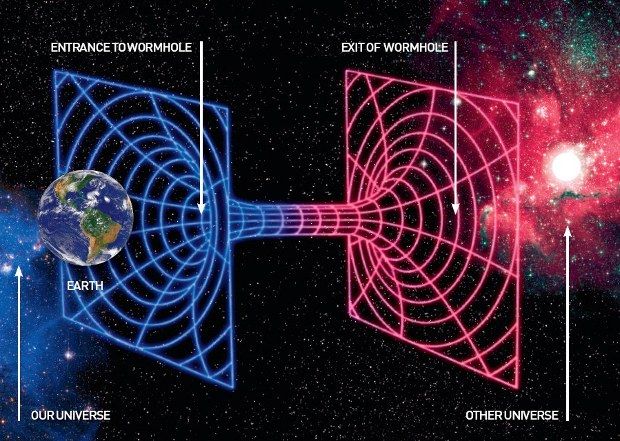Don't freak out, but as it turns out, the entire Milky Way, which happens to be our home galaxy, might just be one mammoth space-time tunnel, otherwise known as a wormhole. Or so brainiacs argue in a new study in the journal Annals of Physics.
Even cooler, the scientists behind this rather shocking claim say that, if the Milky Way were in fact a wormhole, this space-time tunnel would be totally navigable and we could easily travel through it.
Wait, what?
As mentioned, wormholes are essentially space-time tunnels. At one end, you have certain points in time and space. At the other, you get a brand new set of time and space coordinates. Otherwise put, such tunnels bridge two distinct regions of space and time.
It's kind of like crazy partying with your friends. Now you're blissfully enjoying a cocktail and listening to some guy or gal playing classical tunes on the piano, the next thing you know you're waking up in a parking lot an ocean away from where you live.
What's important to keep in mind is that, for the time being at least, wormholes are nothing but a theoretical concept. True, they've made several appearances in blockbusters, but the fact of the matter is that scientists are yet to pin down observational evidence proving their existence.
Yes, now would be a good time to start asking yourself how the heck brainiacs came up with the idea that our entire galaxy could be a huge wormhole if they don't even known for sure that such space-time tunnels actually exist.
Math, math and then some more math
The scientists now saying that the Milky Way could be a massive wormhole or at least play host to one such space-time tunnel base their claim on a whole lot of freakishly complicated calculations taking into account the distribution of dark matter in our galaxy and how the Big Bang played out.
Astrophysicist Paolo Salucci said it best, so let's hear (well, read) it from him: “If we combine the map of the dark matter in the Milky Way with the most recent Big Bang model to explain the universe and we hypothesize the existence of space-time tunnels, what we get is that our galaxy could really contain one of these tunnels, and that the tunnel could even be the size of the galaxy itself.”
“We could even travel through this tunnel, since, based on our calculations, it could be navigable. Just like the one we've all seen in the recent film ‘Interstellar,’” the International School for Advanced Studies (SISSA, for those who don't want to run out of breath when saying this institute's name) researcher went on to explain.
Otherwise put, it's theory alone that suggests our home galaxy could accommodate for a wormhole that might just be the size of the Milky Way itself. Interestingly enough, astrophysicist Paolo Salucci and fellow researchers say that other spiral galaxies such as neighboring Andromeda could too host space-time tunnels.

 14 DAY TRIAL //
14 DAY TRIAL // 

